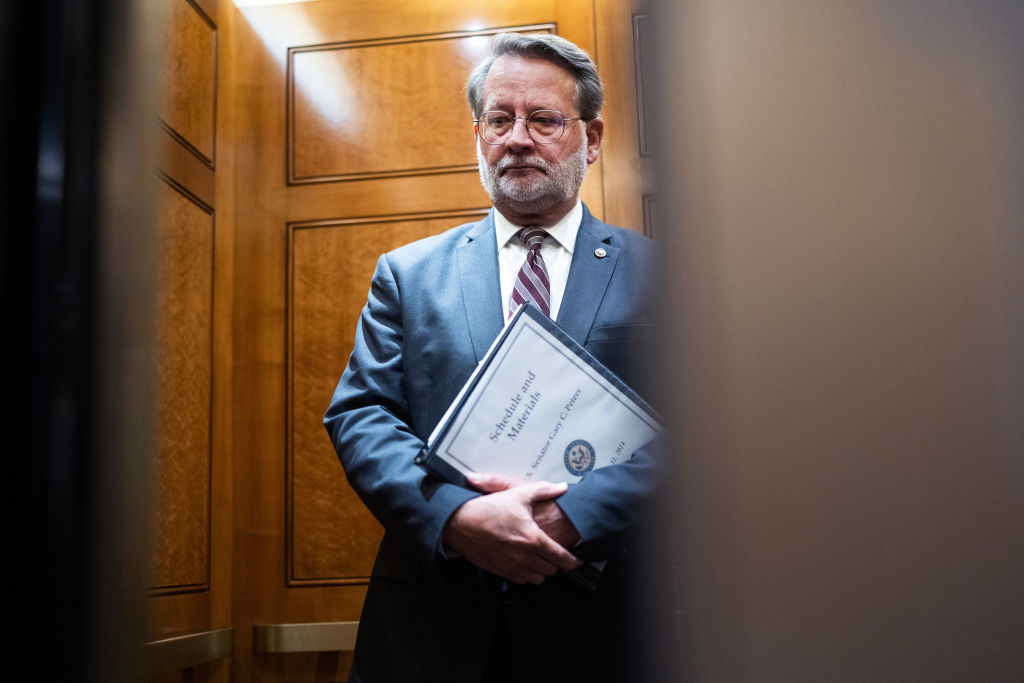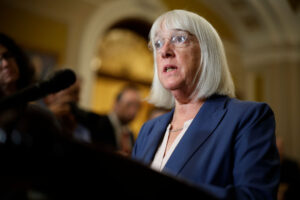Today is Day 35 of the government shutdown. This stalemate is now tied with the partial shutdown of 2018-2019 as the longest in U.S. history.
The House has been out of session for 46 days.
Today is also Election Day in New York City, California, New Jersey, Pennsylvania and Virginia.
We want to focus this morning on the progress in reopening the government. Senate Majority Leader John Thune said Monday that the Senate is “getting close to an offramp” to end the shutdown, citing bipartisan talks among a group of rank-and-file senators. We have a full in-the-room update on that.
News: The outlines of a potential deal to end the shutdown are starting to take shape, although the talks are very fragile at this point and there’s still a long way to go.
Senators and aides involved in negotiations tell us some Senate Democrats are warming to Thune’s offer to open the government and then hold a vote by a date-certain on extending the expiring Obamacare subsidies. Senators involved in these talks include Gary Peters (D-Mich.), Katie Britt (R-Ala.), Jeanne Shaheen (D-N.H.), Susan Collins (R-Maine), Maggie Hassan (D-N.H.) and Mike Rounds (R-S.D.).
The shutdown has become too painful, many of these Democrats believe, and Republicans clearly aren’t going to cave by negotiating an Obamacare deal before the stalemate ends. A date-certain vote on Obamacare subsidies creates another new deadline and allows time to craft a bill that could win enough GOP support.
Now that open enrollment has begun, these Democrats say, they can blame Republicans for premium hikes — as Senate Minority Leader Chuck Schumer did during a floor speech Monday — and use that to pressure GOP senators on the issue.
The second element under discussion involves pairing the stopgap funding bill to open the government with a three-bill minibus and other guarantees to pass full-year appropriations bills on an agreed-upon timeline.
“There’s certainly ways to do that,” Peters told us. “We all want to have a real appropriations process … We’ve passed a number of bills [in committee], broadly bipartisan. I’d like to actually see those get signed into law.”
The attractive part of this offer for senators would be to avoid a full-year CR that many hardline House Republicans and the White House want. You may have noticed that most of the senators involved in these talks are also appropriators. That’s no coincidence.
The GOP senators in the bipartisan group are explicitly framing this as a way for Democrats to not only preserve their power over the funding process, but also to push back against House Republicans and the White House.
To be abundantly clear, accepting this offer would be a cave by Democrats, who have been saying they need an Obamacare deal to open the government. But this construct would only require a handful of Democrats to break from their party.
Progressives will be livid. A commitment to vote on an Obamacare bill is far from a guarantee that it will pass in the Senate, much less in the House. It’ll be fascinating to see how Schumer handles this.
Cautious optimism. There’s good reason to be skeptical about what we just laid out. For starters, landing on a new end date for a CR to reopen federal agencies will be difficult. The Senate will vote for the 14th time today on a GOP-drafted Nov. 21 CR.
Conservatives, fearing a Christmas omnibus, want any CR to run until early 2026. Collins — desperate to make her panel relevant again — is proposing Dec. 19 instead. Collins said Monday that a January deadline makes a “disastrous” year-long CR more likely.
By suggesting Dec. 19 and saying she wants to avoid a year-long CR, Collins is reflecting Democrats’ view, too.
But House Republican leaders are extremely unlikely to agree to a December CR deadline. And the White House would much prefer early 2026. Trump administration officials pushed for that last time.
The minibus — which funds Military Construction-VA, Legislative Branch and Agriculture — being attached to the CR would force Speaker Mike Johnson to bring the House back into session for a bill that his conference certainly wouldn’t like. That’s part of the pitch from Senate GOP appropriators in the bipartisan Senate group.
The problem for Senate Republicans is that they haven’t yet been able to clear objections on their side, although they expect to be able to resolve them.
The White House will have to be deeply involved here. House Republicans aren’t going to want to swallow a minibus paired with a short-term CR. To that end, President Donald Trump will need to wholeheartedly embrace both the CR end-date and the minibus.
But you can be absolutely sure that hardline House Republicans will argue that they should only accept a straight CR needed to open the government.
The tough road for Republicans. We’ve come a long way from what Democrats were initially seeking: an Obamacare subsidies deal etched into the CR to keep the government open. Democrats were then demanding a vote on a one-year Obamacare subsidy extension — set at a simple-majority threshold — paired with a commitment to vote on a longer-term solution by a date-certain.
When the government eventually reopens, it gets very tricky for Republicans. We’ve said countless times that the GOP is going to be hard-pressed to find an Obamacare deal that they can live with.
And then there’s FY2026 spending, where Senate Republicans will find more natural agreement with Senate Democratic counterparts than House Republicans.





